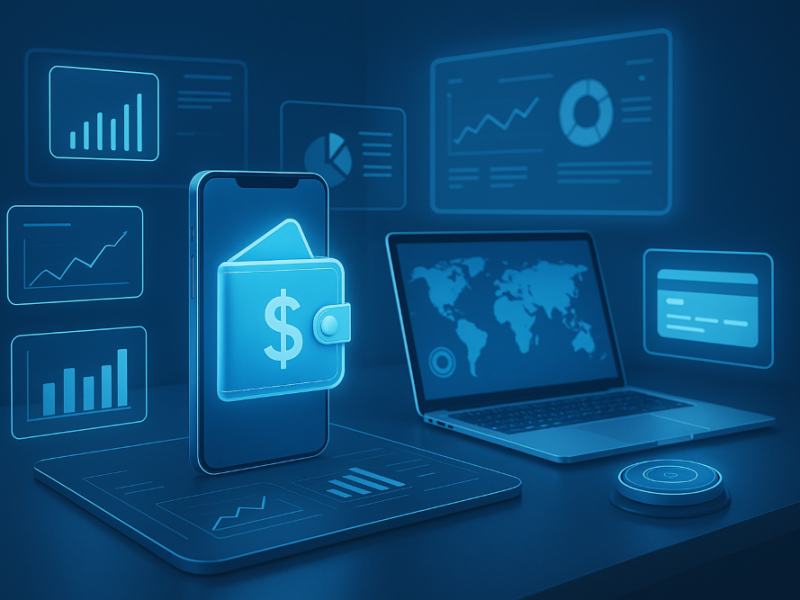Blog - Channel Partner
Integrating Mobile Money with Dynamics 365 Business Central: Is It Possible?

Hey there! If you’re a finance manager, IT guru, procurement officer, or just someone who spends a lot of time buried in business processes, you’ve probably wondered about the magic — or chaos — of integrating different systems. One question I keep hearing lately is: Can I integrate mobile money with Dynamics 365 Business Central?
Whether you’re working in a bustling startup or a well-oiled enterprise, this integration sounds like a dream. Mobile money is booming, especially in regions where digital wallets and mobile payments are the norm. Dynamics 365 Business Central, on the other hand, is a robust ERP that keeps your operations running smoothly. But getting them to “talk” to each other? That’s where things get interesting.
Why Mobile Money?
First, a quick reality check: Mobile money is no longer just a cool option — it’s a necessity in many markets. Think about the convenience of paying bills, receiving supplier payments, or even reimbursing staff via mobile money apps like M-Pesa, MTN Mobile Money, or Airtel Money. It saves time, reduces cash handling risks, and speeds up transactions.
If your company operates in Africa, Asia, or other regions where mobile money dominates, you know it’s a game changer. But here’s the kicker — how do you capture those payments, track them, and reflect them accurately in your accounting system without manual double entry? That’s where integrating with Business Central comes in.
What Is Dynamics 365 Business Central Anyway?
In case you’re new to it, Business Central is Microsoft’s cloud-based ERP solution designed for small and medium-sized businesses. It handles everything from finance, sales, purchasing, inventory, to project management — all in one place.
If your finance team loves reports and real-time data, Business Central is their playground. But like any ERP, it’s only as good as the data you feed it. So, if mobile money transactions happen outside the ERP, you risk having a disconnect between actual cash flow and what the system shows.
So, Is Integration Possible?
Short answer: Yes. But with a few caveats.
Mobile money platforms don’t typically come with plug-and-play connectors for ERPs like Business Central. Unlike traditional bank integrations, mobile money systems are often country-specific and use different APIs or messaging standards.
That means a bit of legwork is needed, often involving custom development or third-party middleware to bridge the two.
For example, let’s say your company receives payments via M-Pesa. You want those payments to automatically update the customer ledger, reconcile bank statements, and trigger invoice statuses in Business Central. The integration must pull transaction data from the mobile money provider’s API and push it into Business Central’s finance module.
Personal Experience Moment
I remember working with a client in Kenya who wanted this exact setup. Initially, they were manually exporting payment reports from M-Pesa and uploading them into Excel before importing the data into Business Central. It was tedious, error-prone, and slowed down month-end closing.
We introduced a middleware solution that connected directly to M-Pesa’s API, fetched transactions in real-time, and created journal entries in Business Central automatically. The difference was night and day — their finance team could focus on analysis rather than data entry.
What Does the Integration Look Like Technically?
The good news: Business Central supports APIs and extensions that make integrations smoother than in the past. Microsoft provides developer tools, and there’s a vibrant community sharing connectors and code snippets.
The typical architecture involves three parts:
1.
Mobile Money API Access: This is how you pull payment data or push requests to the mobile money platform. Most mobile money providers offer APIs but with varying levels of documentation and security protocols
2.
Middleware/Connector: This is the “translator” layer. It handles authentication, data transformation, error handling, and scheduling. Some companies build this in-house; others buy from vendors who specialize in financial integrations.
3.
Business Central Extension: Using Business Central’s AL language, developers create extensions that can receive data from middleware, map it to the right accounts, customers, and invoices, and automate posting.
What About Security?
Integrating financial systems means handling sensitive data. Mobile money APIs usually require strict authentication (OAuth, API keys) and encrypted connections. Business Central also enforces role-based access control.
Finance managers and IT teams must collaborate closely to ensure the integration meets compliance requirements and doesn’t open up vulnerabilities.
Let’s Pause and Reflect
Have you ever dealt with multiple payment channels and struggled to keep your accounting accurate? How much time does your team spend reconciling mobile money payments manually?
If you find yourself nodding, then integration is not just possible — it’s almost essential for scaling your business efficiently.
The Benefits Are Clear
- Speed: Real-time payment posting means faster financial close and better cash flow visibility.
- Accuracy: Reduces errors from manual entry and improves audit trails.
- Efficiency: Frees up your finance team to focus on analysis, not data wrangling.
- Customer Experience: Automated payment confirmations can improve customer trust and retention.
What Challenges Should You Expect?
API Limitations: Some mobile money providers have limited API features or usage quotas.
Customization: Every business’s process is unique, so off-the-shelf connectors might not fit perfectly.
Cost: Developing or buying an integration solution requires investment, though it often pays for itself quickly.
Change Management: Your team might need training to handle the new workflows.
Getting Started — Some Practical Tips
Assess Your Mobile Money Platforms: Which providers do you use? What APIs do they offer?
Map Your Business Processes: Understand how payments flow today and where you want automation.
Engage Your IT Team and Finance Team: Collaboration is key for a smooth rollout.
Explore Middleware Options: Look for solutions that support your mobile money provider and Business Central version.
Pilot Small: Start with a test environment to iron out issues before going live.
Wrapping It Up — Why You Should Care
Integrating mobile money with Business Central isn’t just about technology — it’s about transforming how your business handles money every day. It brings the convenience of mobile payments into your core financial system, making your data cleaner, your processes faster, and your decisions smarter.
So, what’s your next move? Are you ready to take your financial operations to the next level with integration? Or maybe you have a story to share about handling payments that you’d love to swap? Either way, I’d love to hear from you.
If you’re curious about how to get started or want to explore integration options tailored to your business, drop a line at This email address is being protected from spambots. You need JavaScript enabled to view it..
Let’s make your mobile money work harder for you!


